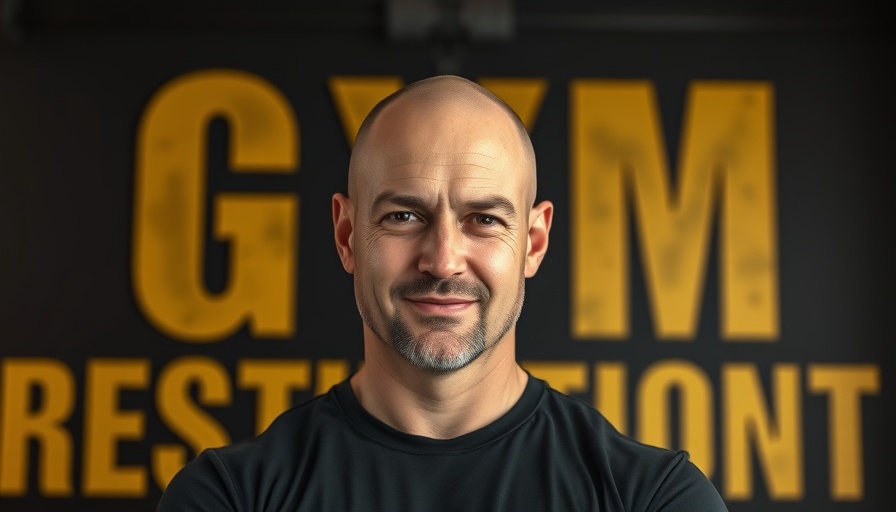
Unlocking High Retention Rates in Fitness: Insights from Friendship Fitness
Have you ever wondered what keeps gym members engaged for years on end? The episode titled How to Keep Gym Members for 50+ Months! dives into the fascinating strategies of Friendship Fitness, a thriving gym in Dublin, Ohio, known for its impressive retention rates. By focusing on creating a welcoming community, providing excellent training, and emphasizing member experience, they've managed to achieve success that few others have.
In How to Keep Gym Members for 50+ Months!, we explore the impressive approaches of Friendship Fitness in retaining their members, inspiring further analysis of effective strategies for gym owners.
The Power of Community in Retention
The founders of Friendship Fitness, Jeff Benick and his partner Grant, initially established their gym as a close-knit community space where friends could work out together. From the start, their approach centered around creating connection rather than simply membership sign-ups. This grassroots origin story reflects their commitment to member satisfaction. As Jeff noted, many of the gym's early members were referrals, evidence of a program that thrives on camaraderie.
Such an environment significantly contributes to retention. When gym-goers feel a genuine sense of connection with trainers and fellow members alike, they are more likely to stick around. The gym's retention strategy emphasizes the importance of building relationships, showing how turning a gym into a community center can elevate attrition rates dramatically.
Creating a Systematic Approach to Member Retention
Friendship Fitness takes a structured approach to ensure members feel engaged throughout their fitness journey. One of their key strategies is a 90-day onboarding program focused on helping new members integrate into the community. During this period, they set achievable goals and monitor members' progress, which keeps them coming in regularly—especially those crucial early days. Research from the gym indicates that attending 30 workouts within the first 90 days significantly increases a member's likelihood of long-term success.
Moreover, the systematic tracking of member progress and open communication builds trust and accountability. Each new member's experience is tailored to their unique needs, ensuring that they feel valued and supported. The notion that 'if you could get them through the door, they’ll stay' works exceptionally well here, as members are not just numbers; they’re treated like family.
Exciting Events to Keep the Momentum Going
In addition to onboarding strategies, Friendship Fitness boosts retention through exciting community events. The gym organizes quarterly fitness challenges, team-building activities, and social workshops that foster camaraderie among members. These events are designed to make members feel like heroes in their fitness journeys, resulting in celebrations of milestones and achievements in a fun, engaging atmosphere. These gatherings foster connections that often go beyond workout sessions, with friendships forming that keep members returning.
Engaging with members through events has been particularly effective in creating a vibrant atmosphere within the gym. For example, creating camaraderie through events such as a women’s self-defense workshop allows members to bond over shared experiences, enhancing their sense of belonging.
The Real Estate Play: Smart Long-term Investments
Interestingly, Friendship Fitness also operates on a savvy real estate model, where gym ownership serves dual purposes. The gym has evolved into a space that generates both income and community value, dramatically increasing the building’s equity and profit margins. Owning their location since 2014, Jeff and Grant have transformed it into a $2.3 million investment, significantly profiting compared to their initial purchase price.
This transition exemplifies the idea that gyms can be viable long-term investments when managed correctly. Real estate plays a vital role in business strategy for gym owners, allowing them not just to build a brand but also secure their financial futures more securely.
Building on Success: Future Growth Plans
With a steady growth plan, Benick is currently focused on scaling operations while minimizing his day-to-day involvement. The gym aims to explore additional locations, ensuring that systems are in place for continued success. Investing in staff training, automation, and a robust operational system will allow him to transition into more of a mentorship role, paving the way for leadership development within the team.
It’s evident from Jeff's narrative that maintaining low attrition rates is not just about keeping members; it's about creating an experience worth returning for. Fitness establishments can learn from Friendship Fitness' model that prioritizes community, structured onboarding, and continuous engagement through events and real estate strategies as critical components for long-term success.
A Call to Action for Gym Owners
If you’re curious about implementing these strategies for your gym or looking for more insights on retaining your members, consider starting by evaluating your community involvement and initiating fun, engaging events. For more information on member retention strategies and successful gym ownership models, explore various podcasts focusing on consistent business growth.
 Add Row
Add Row  Add
Add 




Write A Comment